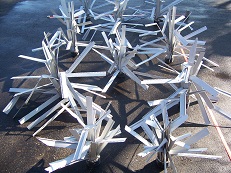Eldon Peters
Environmental Biology and Mathematical Modeling
Instructor: Shannon Leissner Assistant: Shana Funderburk
Largemouth bass are a good indicator of pond health and will specify the health of the tested pond after the treatment of any adversary conditions. The study follows the set guidelines obtained by Brady (1981) to determine the procedure needed to correct any problems concerning the pond. The study involved treating any flaws related to the pond and monitoring its effect on the bass caught. The bass were then compared to the pre-treatment bass to determine the effect of the revitalization.
Ponds offer an excellent setting in which to study aquatic ecosystems simply for the reason that you can control many of the variables. Because largemouth bass (Micropterus salmoides) are the top predator in a pond, they are affected by everything that lies beneath them on the food chain. This makes largemouth bass one of the best indicators of problems within a pond. The data gathered in this experiment will specify the elements that need to be added or changed to create healthy pond, which will be indicated as it becomes a good fishing resource for largemouth bass.
There are many factors that contribute to the health of a pond. Fish attractors such as brush should be placed at different depths throughout the pond. These attractors will allow a place of ambush for large fish and a refuge for smaller fish. The shallowest part of the pond should only be two feet deep; this depth will prevent the growth of foreign aquatic weeds. The temperature should range between 64 and 90 degrees Fahrenheit in order to promote maximum fish growth. Fish will tolerate a pH range of 4.6 to 11, but will thrive in water with a pH of 6.5 to 9.0. One side of the pond should be shaded and the other should be open to the wind to churn the water and produce oxygen. There should be enough phytoplankton to cloud the water, which will indicate that there is a sufficient amount of oxygen to sustain aquatic life (Oster, 1983).
In order to manage a productive pond one must understand the delicate balance of the ecosystem in the pond. Located at the bottom of the food chain are plants called phytoplankton which use chlorophyll to produce food. Zooplankton feed exclusively on phytoplankton. Smaller baitfish feed on zooplankton. Bream feed on small baitfish, insects, and worms. Largemouth bass feed on anything from four-inch bream to large snakes (Oster, 1983).
Once a pond is considered unhealthy, a number of tests are run to determine the procedure needed to revitalize the pond. The pH of the water must be tested. If the pH is too low, limestone can be added at a ratio of one ton per acre to raise the pH by one unit. Unfortunately nothing can be done to remedy a high pH (Brady, 1981).
An additional test is needed to determine the quantity and type of phytoplankton present in the pond. Phytoplankton play a key role in producing oxygen. If the population of the phytoplankton is too low, the oxygen level will decrease causing fish kills. Therefore fertilizer must be periodically added to promote the growth of the phytoplankton, but can only be added when the temperature reaches 65 degrees Fahrenheit. Pond fertilizer is composed of four parts phosphorus, four parts nitrogen, and two parts potassium. The fertilizer may be applied anywhere between six and sixteen times a year, depending on the natural fertility of the pond (Brady, 1981).
If there is an overgrowth of phytoplankton, it will block the sunlight that other aquatic plants need for photosynthesis. When the plants die, bacterial decomposition drains the pond of oxygen. This oxygen depletion will have a devastating effect on fish. To counteract the increase of phytoplankton, lime is added to slow the population growth (Pond Management Guidebook, 1989).
Oxygen deficiency is deadly to a pond, but it is easy to fix. A test kit is used to find the oxygen level of the pond. If the level is too low, an aerator puts fresh water back into the pond. The added water should be sprayed through the air so that it causes a splash as it hits the water to intensify the oxygen content. Another way to increase the oxygen level is to pump water from the bottom of the pond into the aerator. The oxygenated water, located at the surface, will then shift to the bottom at a faster rate. The water at the base of the pond will pass through the aerator and back to the surface creating a cycle (Pond Management Guidebook, 1989).
The main food for the largemouth bass in a pond is small bream that spend much of the summer in the vegetation. If the aquatic plants are too dense, the bream will escape from the bass that are waiting to ambush its prey. If all the vegetation is removed, the pond becomes oxygen deprived, and the bass lose their places of ambush. The vegetation must be controlled to provide the optimum conditions for the fish. Herbicides or aquatic mowers can be used to trim the population, and fertilizer can be used to boost the plant population (Oster, 1981).
In a proper ecosystem, there is a delicate balance between the predator and the prey. Within the pond, the bass must feed on bream, or the bream will eat the bass eggs and decimate the population. If the bass population is too large, the bream population will decline and the struggle for food will increase (Fig. 1) (Pond Management Guidebook, 1989).
Study Question
The purpose of this study is to correct the problems within a pond that have contributed to the reduction in fish population over the past three years. A drop in the number of fish caught indicates a decline in water quality. Once the problems are fixed, the number of fish will increase along with water quality.
Study Site
This study involves a man-made pond that has a small population of underweight bass. The pond spans four acres and ranges from 0 to 12 feet deep. The only wooden structure of the pond is a massive brush pile is at deepest part and lines the entire bank. The edges of the pond present shade on one side and an open bank, where the wind churns the water, on the other. Water opposite the levy is shallow and offers a place for the fishes to spawn and feed. The pond is sufficiently fertilized because there is an ample amount of vegetation and phytoplankton growth.
Methods
The methods described in Brady (1981) will be implemented to increase the number of fish caught and ultimately improve the water quality.
Results
The number of largemouth bass caught after pond treatment compared to the number of largemouth bass caught before treatment will indicate the health of the pond. Lime, aquatic mowers, and modified topography will be used to correct different problems related to the pond if necessary.
Conclusion
When all of the problems within the pond are corrected, the amount of largemouth bass caught should increase along with a physical growth of all the species. The number of fish caught will serve as an indicator of pond health, and therefore of water quality, which is a major concern of people today.
Works Cited
Brady, P. 1981. Pond Management for Sport Fishing in Arkansas. U.S.D.A. Soil Conservation Service. Pages 31-32, 34, 39, 43-47, 49-50.
Pond Management Guidebook. 1989. NC Wildlife Resources Commission. 23 pages.
Oster, D. 1983. Largemouth Bass. Cy DeCrosse Incorporated. Minnetonka, Minnesota. Page 8-16, 20, 36, 38, 89-126, 135-152.
Fish Caught | Population Condition | |
| Only recently hatched | Bass overcrowded | |
| bream. | ||
| Mostly 3″-5″ bream | Bream overcrowded | |
| Young bass, hatched | ||
| bream, few 3″-5″ | Balanced population | |
| bream. |
Fig.-1: Conditions of largemouth bass population based on number and type of
fish caught in a seine (Pond Management Guidebook, 1989).
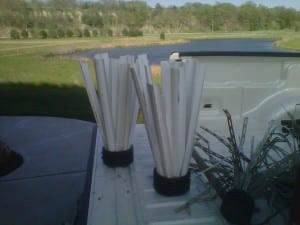
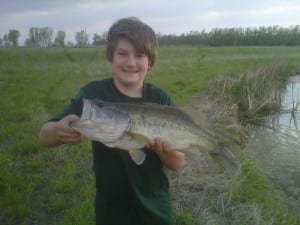

.jpg)






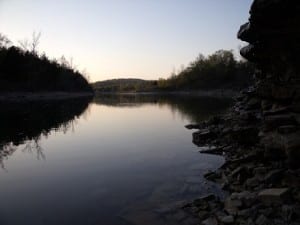
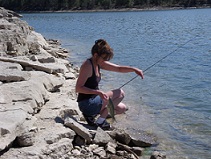
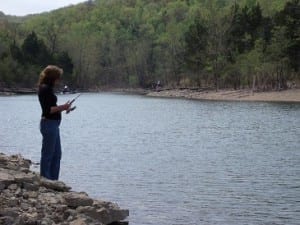
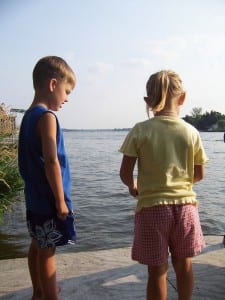
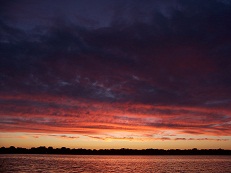
 If you own or manage private waters anywhere in the world – or want to – Pond Boss is the leading authority. Pond Boss magazine and pondboss.com provide valuable, up-to-date information on the topics, products and services you need to be a better steward of your land and water. Learn and share from the nation’s leading pond management experts and our family of friends. We stand ready, willing and able to assist.
If you own or manage private waters anywhere in the world – or want to – Pond Boss is the leading authority. Pond Boss magazine and pondboss.com provide valuable, up-to-date information on the topics, products and services you need to be a better steward of your land and water. Learn and share from the nation’s leading pond management experts and our family of friends. We stand ready, willing and able to assist.

